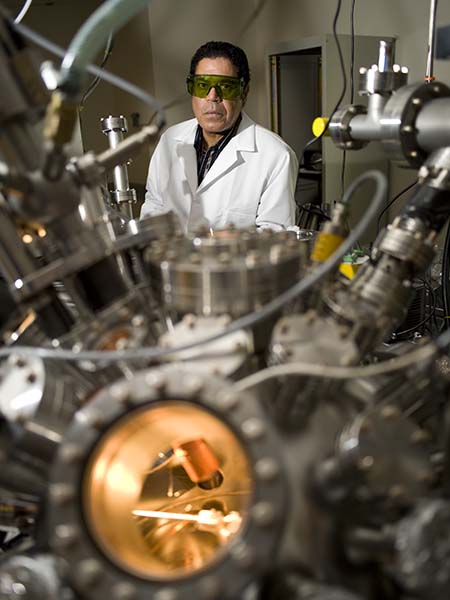NE’s Ahmed Hassanein receives two international awards
In 2019, he was awarded the prestigious IEEE Charles Birdsall prize for Excellence in Computational Nuclear and Plasma Sciences. The award was given by the Institute of Electrical and Electronics Engineers (IEEE), Nuclear and Plasma Science Society (NPSS) for “outstanding contributions to recent innovation and leadership in computational plasma physics for applications to magnetic fusion in full 3D simulation of plasma evolution during transient events in ITER Tokamak device.” The award was named after Charles K. Birdsall (1925-2012), a pioneering inventor and educator whose contributions to plasma science have made lasting impacts on communications and other technologies.

Hassanein received the 2020 Outstanding Achievement Award of the American Nuclear Society (ANS), Fusion Energy Division given for individual recognition of a continued history of exemplary achievement requiring professional excellence and leadership in the fusion science and engineering area. This award is his third international award. In 2013, Hassanein received his first international award, the IEEE Merit Award, the highest technical award of the IEEE Nuclear & Plasma Sciences Society for “for seminal contribution and leadership in the field of plasma evolution and leadership through development of advanced computer simulation combined with state-of-art innovative laboratory experiments”.
He is a Fellow of seven societies, including IEEE, SPIE, AAAS, ANS, OSA, APS, and IOP.
He is among the top experts in computational nuclear and plasma science in the world and has developed cutting edge tools, including the High Energy Interaction with General Heterogeneous Target Systems (HEIGHTS) package for the simulation of power deposition by intense laser, plasma, and particle beam sources on target materials is a key achievement. HEIGHTS combines diverse multi-physics models including energy deposition, target vapor and plasma formation and transport, magnetohydrodynamic processes, thermal transport, atomic physics, radiation transport, all in the presence of intense electric and magnetic fields.
In addition to the convergence of multi-physics models, Hassanein’s work addresses the numerical challenges that arise with disparate time and space scales and multi-physics and incorporates both innovation in algorithms, and validation to ensure convergence and fidelity. His radiation transport methods, for example, include both Lagrangian and Eulerian treatments, often competitively in computing multi-spectral radiation transport via Monte Carlo methods or via continuum and lines transport but with significant advantages for Monte Carlo methods having much lower computational cost.
Applications of his work include magnetic fusion energy, inertial fusion energy, discharge- and laser-produced plasma sources for extreme ultra-violet lithography, laser-induced breakdown spectroscopy, with applications in high power accelerators and national security.
At the other end of the physical length scale, Hassanein is also an internationally recognized leader in nanolithography. He and his team have developed methods for modeling extreme ultraviolet lithography sources as tools for engineering the next generation of computer chips. This work leveraged his modeling capabilities for materials interface with high energy plasmas developed in his magnetic fusion facing component efforts. This work as contributed substantially to the science and engineering of lithography target materials and their optimization. Indeed, his work predicted the failure of dense plasma focus devices funded by the semiconductor industry for next-generation nanolithography, resulting in termination of the effort funded by one of the largest global semiconductor companies.
His innovation and productivity are reflected in his portfolio of more than 500 publications, with nearly 6800 citations and an h-index of 37, as well as four patents and others pending.
